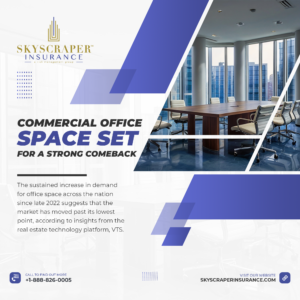This year, FC&S readers inquired about damage caused by a garbage man and coverage for alcohol being aged in barrels.
We love questions from our subscribers! Each one is unique and gives us the opportunity to delve through the policy language to provide an expert opinion specific to the issue at hand. For years, this has been a favorite of not only the FC&S editors, but from our subscribers as well.
For this reason, we’d like to share with you once again some of our favorite questions of 2023. These are some of our favorite commercial questions. Remember, we’re happy to answer any coverage questions you have. Submit your questions here.
Is pollution remediation covered when caused by water damage?
On or around December 24th, 2022 the insured suffered a water loss caused by a frozen pipe from a sprinkler system.
Coverage has been extended to the claim for water damages.
It was identified that ACM materials were damaged directly by water.
The carrier contends that the pollutants exclusion cited provides grounds for partial denial to asbestos-containing materials, and microbial growth identified to date.
It is our assessment that but for the water damages to ACM-containing materials, remediation would not be required. What is claimed is the appropriate remediation of Category 3 water. But for the water damage the growth of microbes, et al., would not exist in these circumstances, which must be remediated accordingly.
Our assessment: We find an exception to such exclusion in their cited language and believe it is therefore covered as an exception to such exclusion cited.
We do not find that the “additional coverage” cited plays a role in this scenario, as we seek claim for direct water damage and ensuing loss of the water caused ensuing damages.
Do you see the same based on the cited language provided by the carrier in the attached, assuming that the facts are as stated?
Answer:
You have accurately assessed the coverage, and the remediation should be covered as part of the water damage loss settlement. But for the water damage, such remediation would not be required, so it is part of the water damage claim.
Had the pollution exclusion been preceded by anticoncurrent language, the exclusion would prevail. The anticoncurrent language includes the provision that ‘such loss is to be excluded regardless of any other cause or event contributing concurrently or in any sequence to the loss’. Without this language, the water damage is the cause of loss that led to the pollution discovery and thus the water is the cause of loss.
When the garbage can breaks glass
A garbage collector picked up a garbage can, threw the garbage in the truck, and in the process of putting the garbage can back in its place the garbage can hit a door of a store, breaking the door glass.
The insured’s commercial general liability (CGL) and business auto policies (BAP) are with different carriers. The CGL carrier argues that this accident is not covered under the CGL because of the aircraft, auto or watercraft exclusion (exclusion letter g), which includes operation and loading or unloading. The BAP carrier believes that the aircraft, auto or watercraft exclusion of the CGL does not apply since the property, in this case the garage can, has not been delivered by the insured which is a requirement of the loading or unloading definition.
Is this accident a CGL or a BAP exposure?
Answer:
You definitely have a tough situation here, but the answer is that this is part of the insured’s process of delivering the garbage can to its final resting place from the truck, so it would be covered by the BAP. The CGL excludes the operations while it is being moved from the truck to the place of its final delivery. The garbage can hit the store door before it reached its final delivery point, so it was in the process of its movement from the truck.
This Q&A helps explain the analysis of determining which of the two forms would apply along the process of operations: Loading and unloading question under the CGL Form and the BAP.
Fire loss caused by tenant
I am a North Carolina subscriber with a question related to liability coverage for a tenant of a property. The tenant owns a liability policy to include form, CG 00 01 10 01. The tenant accidentally caused a fire that damaged the premises rented to him. He filed a claim with his insurer. The claim is honored and payment is pending. The insurer states the coverage is secondary to the insurance available per form CG 00 01 10 01, page 11 of 16, 4.b.ii and 4.b.iii. The insurer’s position is that the building owner’s insurance is primary. The problem is the building owner does not want to make a claim under its policy. Is the building owner obliged to make a claim or is the liability insurer obliged to issue payment regardless?
Answer:
The other insurance provision applies to liability that the insured has that he would be legally required to pay damages to a third party. From the description of the loss, the building owner insured does not have a legal liability to pay damages for a fire loss caused by his tenant. If, however, the fire loss was caused by other than the tenant’s accident, say perhaps faulty wiring or a gas explosion, then the building owner insured could be pulled into a liability situation for which the other insurance provision would apply.
If the loss is as described and is fully caused by the tenant, then the building owner would not be liable to pay any of the damages.
Debris removal and the pollution exclusion
My hypothetical client has a CP 00 10 with a CP 10 30 causes of loss form. He has insured as stock alcohol for aging inside barrels. Considering that debris removal (unendorsed) is for covered property, if arising out of a covered cause of loss the barrels break and the alcohol spills all over even into a body of water, would debris removal cover this or would the pollution exclusion apply even if the alcohol is covered property?
Answer:
There are certain specified property damages that are not covered under the debris removal coverage. Pollution is excluded from that coverage as follows:
2) Debris removal does not apply to costs to:
(f) Extract “pollutants” from land or water; or (g) Remove, restore or replace polluted land or water.
As such, in the hypothetical you presented, there would be no coverage for extraction of the alcohol from the water.




